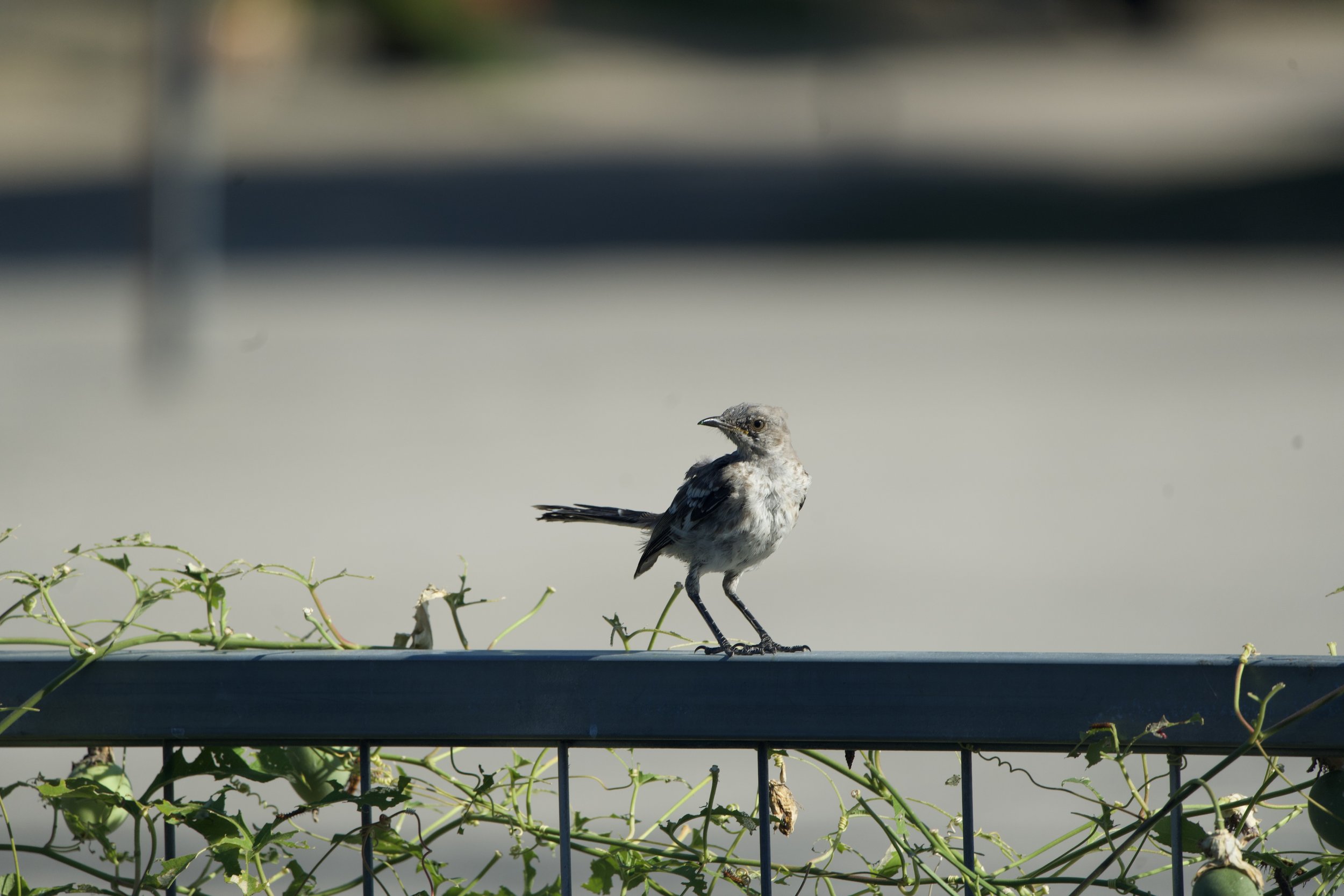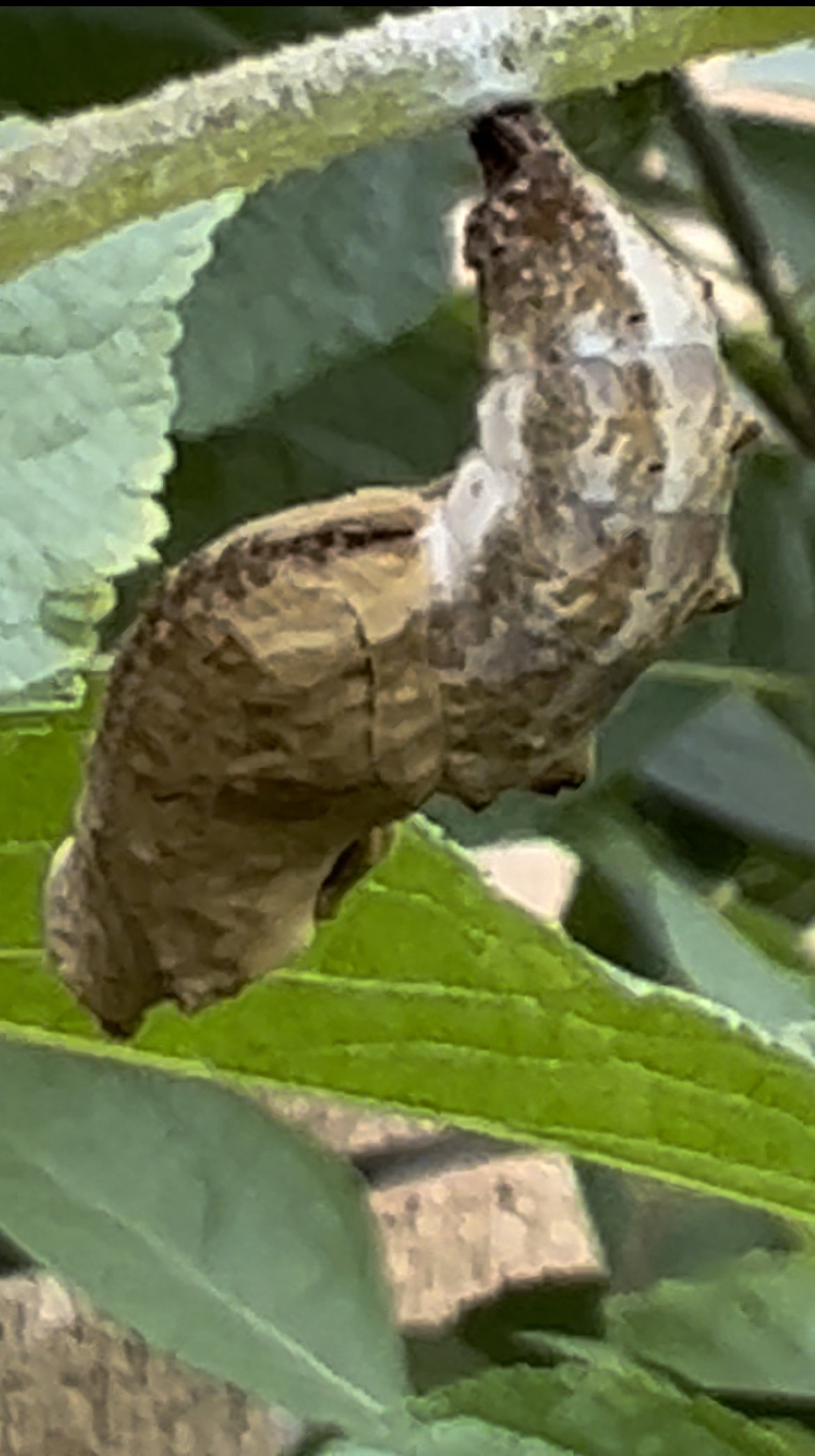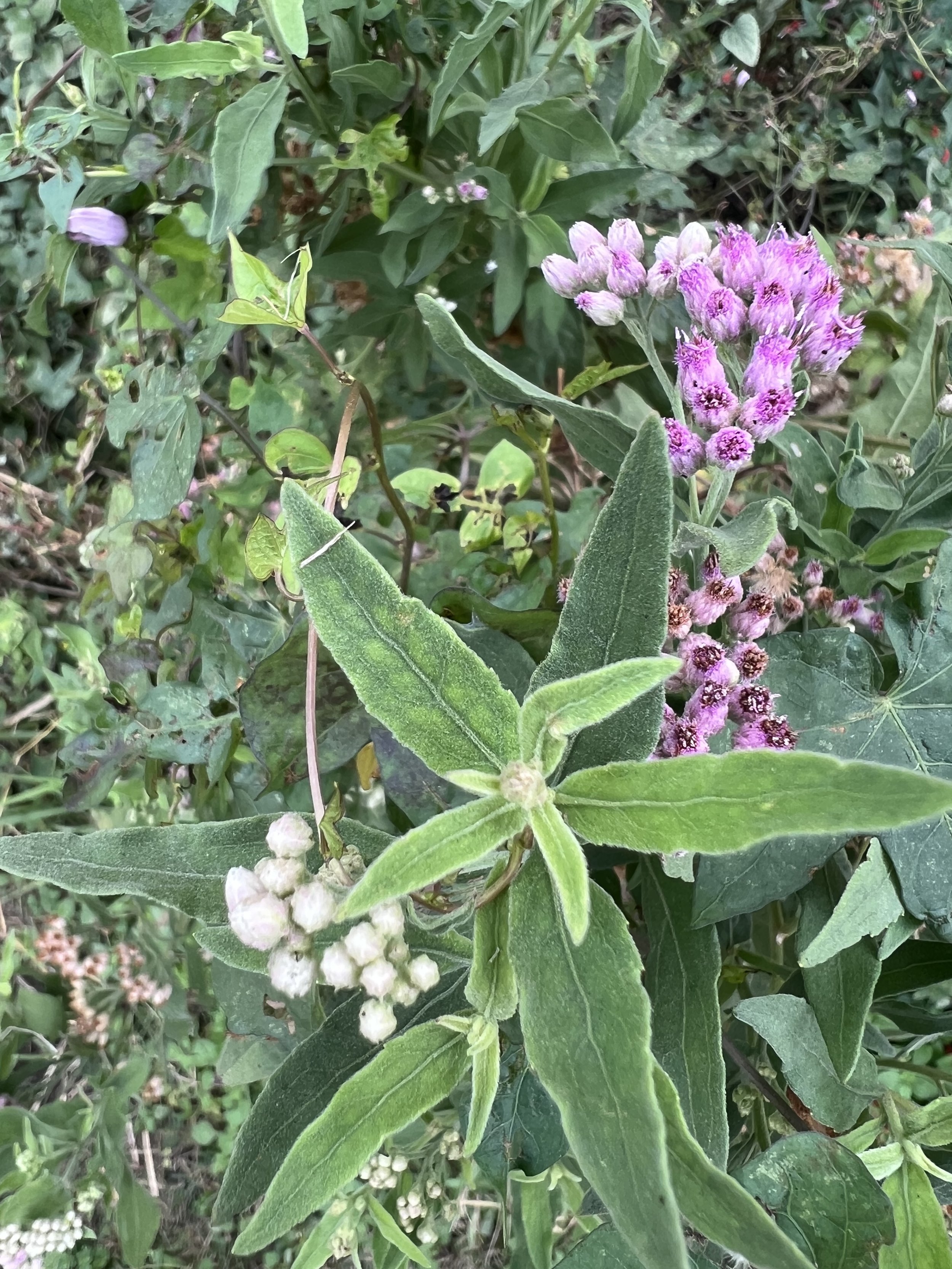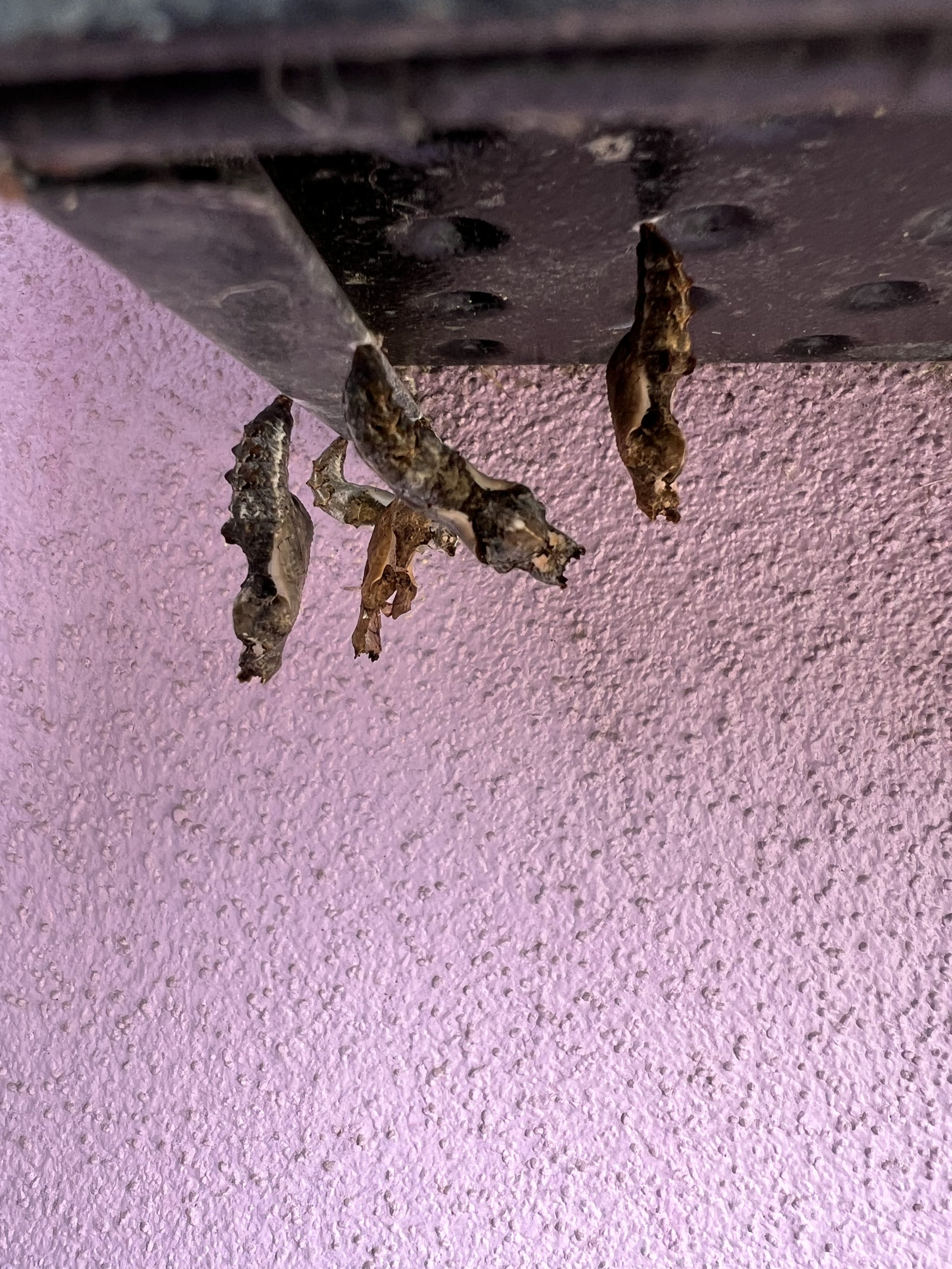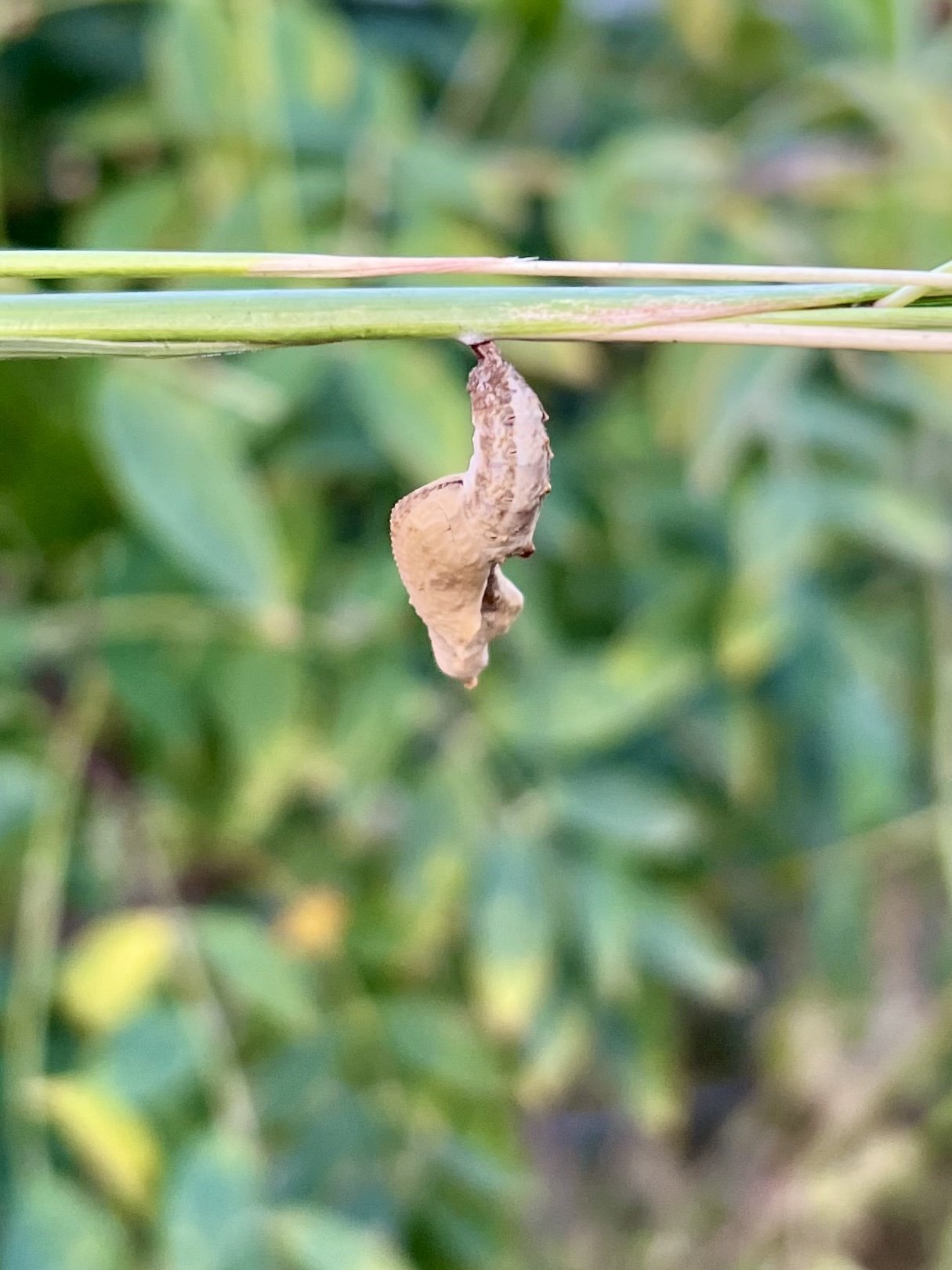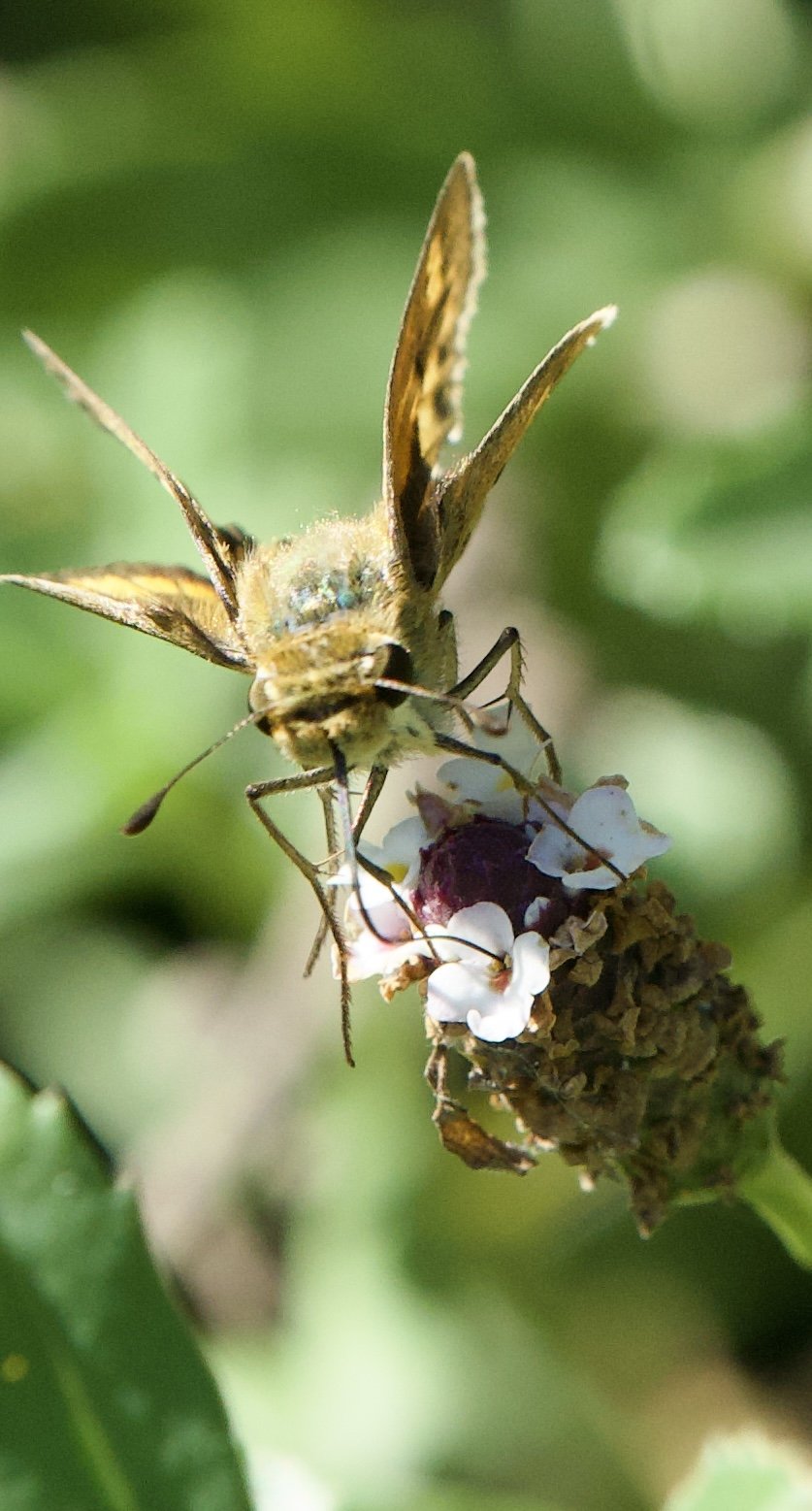New World Giant Swallowtail and Milkweed and the health of Monarchs. This tropical mikweed HAS to be cut down November 1. The Milkweeds are the host plants for Monarchs. They need to move south by November and won’t head south if Tropical Milkweed is available as a host.
Monarch and Climbing Hempvine. Climbing Hempvine is an aromatic delight. It reminds me if warmed sweet honey. The Monarchs agree.
Purple Coneflower and the Gulf Fritillary Butterfly.
Mockingbirds and the fence. I have learned that birds need habitats with multiple elevations. The fence is a popular place for birds to look for insects and tiny toads to eat while keeping an eye on predators.
Monarch and Climbing Hempvine.
Ask upper of the Hesperiini family
Gulf fritillaryon American beauty berry.
GulfFritillary on Marsh fkeabane pictured below.
Marsh fleabane
Gulf fritillary and Lawndale’s mailbox. Over a few weeks the count in the doorway climbed to over 200.
In identified mushrooms.
Carpenter bee
Gukf Fritillary are eating everything
How nature arranges itself
Chrysalis on crabgrass stem
Morning glory, mile a minute vine.
Carpenter bee and Obedient flower
The White viened pipevinesis is the host plant for the Pipelvine swallowtails. I wish I had more. The caterpillars devoures it, and then it comes back.
Cloudless Sulphur and Turkscap
Hemiargus ceraunus, it blue ceraunus,an d pasted native plants.
Monarch and Blue mist flower
Northern Mocking bird perched on the fence.
Northern Mockingbird and trough pond
Hesperiina And Frogfruit
Pushfly and Passiflora leaf
True Sparrow stays in messy bush like spaces for safety and for a source of caterpillars
American snout butterfly
Gulf Fritillary with OE
“Ophryocystis elektroscirrha (OE) is a debilitating protozoan parasite that infects monarchs. Infected adult monarchs harbor thousands or millions of microscopic OE spores on the outside of their bodies. When dormant spores are scattered onto eggs or milkweed leaves by infected adults, monarch larvae consume the spores, and these parasites then replicate inside the larvae and pupae. Monarchs with severe OE infections can fail to emerge successfully from their pupal stage, either because they become stuck or they are too weak
to fully expand their wings. Monarchs with mild OE infections can appear normal but live shorter lives and cannot fly was well as healthy monarchs.
Although recent research shows that tropical milkweed can lower OE replication within infected monarchs (due to high levels of cardenolide toxins), this might not benefit the monarch population. In
fact, this could actually promote disease spread by allowing moderately infected
I PROJECT MONARCH
HEALTH
monarchs that otherwise would have died quickly following eclosion to live longer and spread more parasite spores.“- monarch parasites.




